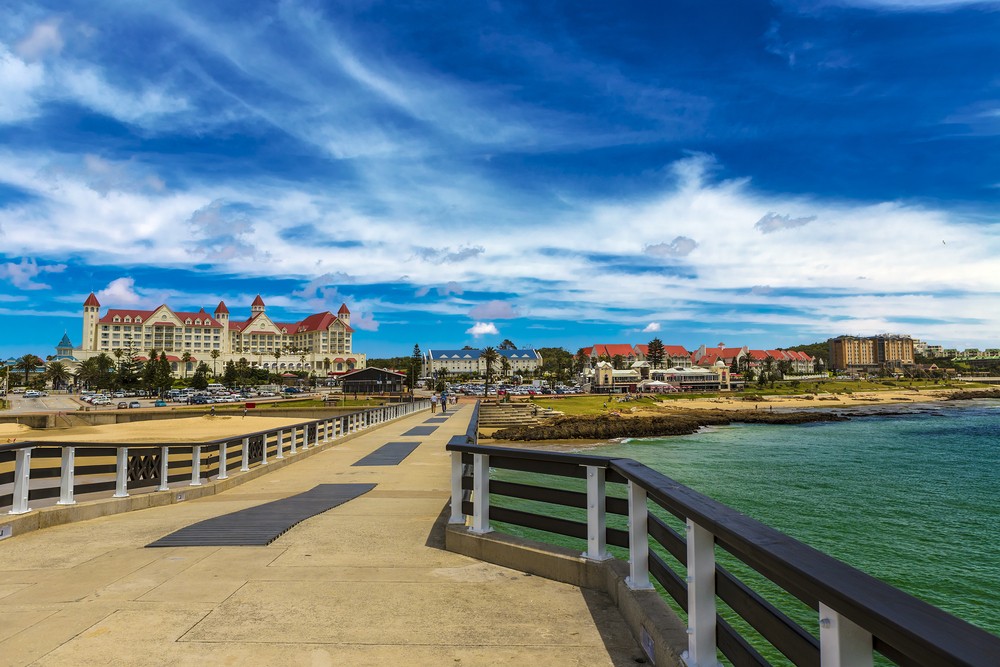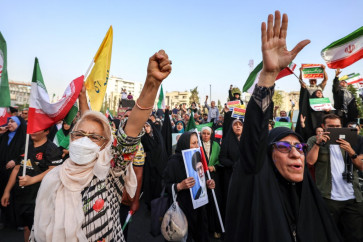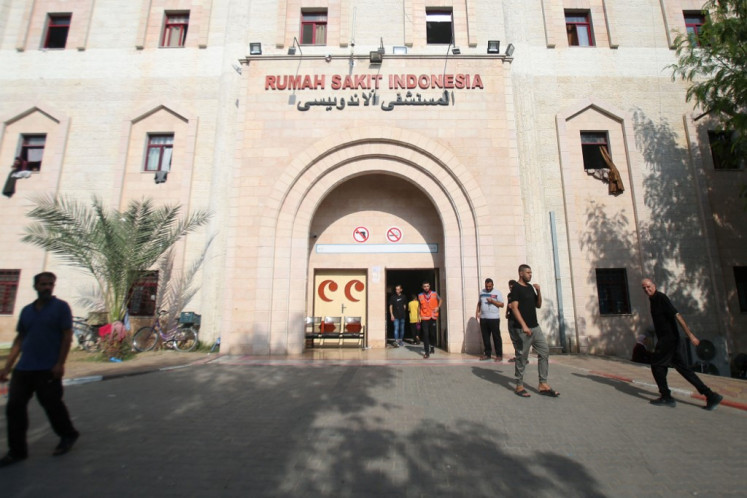Popular Reads
Top Results
Can't find what you're looking for?
View all search resultsPopular Reads
Top Results
Can't find what you're looking for?
View all search resultsOut of South Africa, reminiscing the indelible Eden
South Africa is a “rainbow nation”, where diverse people, cultures, languages and religions exist in harmony.
Change text size
Gift Premium Articles
to Anyone
P
romenading on a pier in front of Port Elizabeth at sunset, Michael Makeleli ran into friends of all sorts, young, old, white, black and Asian, who hugged him and exchanged pleasantries.
It struck me, a reporter from South Korea, how serendipitous, frequent and unassuming the encounters were.
“Thank you for giving us hope, respect and love,” said the 50-year-old Xhosa man, as the sunlight cast its golden glow over the beach and the city.
“People like me have been given so much help from international tourists like you. Through them, I learn about the outside world, exchange knowledge, receive money to support my family, and am given opportunities to explore my own country.”
Read also: Obama to deliver Mandela lecture in South Africa in July
Makeleli, exuding a warm smile and speaking in Xhosa-accented English, stressed, “It was thanks to people like you from abroad, who helped us fight against the apartheid system and make this country free for everyone, as Nelson Mandela dreamed of.”
I was on a familiarization tour of South Africa in early May with a group of South Korean journalists and tourism agency representatives, supported by South Africa’s Department of Tourism. We participated in African Travel Indaba 2018 in Durban, the continent’s largest travel trade show.
International tourists invest in South Africa and reach out to people in need, the tour guide noted, adding they often do volunteer work on top of giving a boost to the economy.
“It’s not just about the money, but the hope, love and respect you give us, which are reinvested in our poor townships,” he said. “We appreciate your presence. It makes a big difference in our lives.”
He urged me to “tell other people about us, so that they can come to South Africa and enjoy and see what they have contributed to make today’s South Africa.”
As I scampered across the vast country for over a little less than two weeks, I was pleasantly surprised to find my expectations about the country surpassed time and time again.
We visited Amakhala Game Reserve, with its safari boasting malaria-free wildlife and dedication to its conservation, only an hour drive from Port Elizabeth.
The Eastern Cape safari offers game drives, bush walks, birding and river cruises crossing into habitats of many animals including the “Big Five” -- lions, leopards, elephants, rhinos and buffalo -- as well as cheetahs, giraffes, zebras and antelopes.
It also provides superb accommodation, relaxation and hospitality from its chic yet earthly lodges and country estates. One of them is the Amakhala Safari Lodge operated by the descendants of original settlers, where you can see animals up close from your suite or swimming pool.
“While the Asian water buffaloes have been domesticated for thousands of years, the African Cape buffaloes couldn’t be tamed for their wild nature,” said field guide ranger Martin Bronkhorst atop a safari Jeep, when we chanced upon a horde of Cape buffaloes.
“They form a herd of up to 2,000 to protect one another from lion attacks. Lions risk their lives attacking one, each weighing up to 800 kilograms, compared to a 500-kilogram cow.”
Our team saw most of the Big Five animals on two game drives at evening and early morning.
Sauntering throughout Port Elizabeth was a manifold experience, with the former colonial city exhibiting a myriad of imperial hallmarks, modern attractions and exotic countenances.
The second oldest city in South Africa, Port Elizabeth was first colonized in the early 1800’s as a port on the Dutch East India Company trade route. Its geostrategic importance grew as a base for British colonists and troops, whose commercial footprints are now ingrained in the city’s colonial edifices, most of them juxtaposed within the central Market Square. The square brings together elements of Victorian architecture and colorful African tapestry, a stone’s throw from the tranquil, picturesque sea.
Read also: Fostering a new era of modern Indonesia-Africa relations
A visit to a township -- a ramshackle residential area borne out of apartheid and home to nonwhites, and where large numbers of black people still live -- revealed a parallel universe inside Port Elizabeth.
“During the apartheid, black people couldn’t purchase homes, because they didn’t have money,” explained Makeleli while driving through a township that had been his hometown since childhood.
“Following the end of apartheid, young married couples who used to live under the same roofs with their parents came out and nested new homes inside townships. That’s why the townships nowadays are so full, while lacking a water supply, sewage and drainage, and electricity.”
As our van carefully drove from one narrow, unpaved street to another, all littered with rubbish heaps and pockmarked with putrid potholes, Makeleli explicated the social and economic disparities within townships that separated the relative haves from the have-nots.
While the poorest of the poor dwelled in decrepit huts barely standing above the ground, those better off took significant care of maintaining and upgrading their homes, installing new windows and rooftops and even cultivating front door gardens, often using bank loans.
The highlight of our tour was a stop at a tavern inside the township, called a “shebeen.” Roused by the pumping beat of classic rhythm and blues, a group of inebriated men, some appearing to be alcoholics, accosted us with curiosity. They tried to engage us, shaking our hands and offering beer. Although I didn’t have the guts to jump in the drunken coterie, some of my courageous colleagues did.
The shebeen was originally an illicit bar or club where alcoholic beverages were sold without a license. South Africa’s shebeens are now legal and mostly located in townships. During the apartheid, they served as dens for the brewing discussions and dissent against the racist system that kept a stranglehold over blacks until the nation’s first democratic elections in 1994.
Shebeens, where people still haunt in search of a sense of community, identity and belonging, are reportedly bouncing back, as South Africans try to preserve their cultural heritage in a rapidly globalizing world.
“Today in South Africa, we have lots of political challenges,” Makeleli said in an interview. “Out of our 57 million people, 14 million are unemployed. Our children are not getting proper education, which is absolutely necessary for their careers. Many people also have HIV/AIDS.”
Black people fought together to upend the apartheid regime, but the freedom and democracy embodied and instituted by Mandela and other democrats did not tangibly translate into economic equality, he argued.
“We cannot wait another 50 years for better education, wages and health care. We need a solution that would bring all South Africans together, to give equal opportunities for all,” he stressed. “We can no longer blame apartheid or white people. It is upon us right now.”
Leaving Port Elizabeth, we headed to Cape Town, a picture-postcard cosmopolitan haven facing the South Atlantic Ocean. We drove along the coast of Cape Peninsula, passing through grasslands grazed by horses and sheep, coastal towns splashed by waves and shrouded in oceanic mists, as well as rustic wineries ensconced between sun-drenched hillsides.
Read also: Cathay Pacific to fly nonstop from Hong Kong to Cape Town
We stopped by the Cape of Good Hope -- a rocky headland on the Atlantic coast at the south-westernmost tip of Africa -- and the nearby Old Cape Point Lighthouse, located on a cliff edge overlooking the blue-rimmed ocean. There, distant mountains on the horizon formed graded silhouettes.
Riding a cable car, which took passengers up on a 765-meter hair-raising trip to the plateau at 1067 meters above the sea, we finally reached the top of the Table Mountain that towered above Cape Town. The sky, the sea and the land, all seamlessly, entered into view.
“Did you enjoy the view?” one Korean tourism agent asked me.
“It was the most beautiful scene of my life,” I answered without hesitation.
He added, “I heard that people wanting or awaiting death come to the Table Mountain as a bucket list destination, but after witnessing nature’s grandeur, they want to live again.”
This article appeared on The Korea Herald newspaper website, which is a member of Asia News Network and a media partner of The Jakarta Post







